
Preventive vaccination DTP (adsorbed pertussis-diphtheria-tetanus) was first used abroad in the late 40s of the last century. Foreign analogue of the DPT vaccine - Infanrix. Both combined vaccines are classified as whole-cell, i.e. containing killed (inactivated) cells of whooping cough (4 IU *), tetanus (40 IU or 60 IU) and diphtheria (30 IU) pathogens. Such a dosage of tetanus and diphtheria toxoids is due to the need to achieve the desired intensity of the reaction of the child's immune system, which is still imperfect and is only being formed.
*) IU - international unit
DTP vaccination is given to children from the age of 2-3 months in order to protect them from three deadly diseases: whooping cough, diphtheria and tetanus (together they add up to the “mysterious” DTP code).
Whooping cough, diphtheria and tetanus are very dangerous, and in young children they are severe. Whooping cough is insidious with severe complications: pneumonia (inflammation of the lungs) and encephalopathy (brain damage). A convulsive cough can generally lead to respiratory arrest. After the introduction of the vaccine the immune system produces antibodies from which memory cells are formed. If in the future the body again encounters the causative agent of the disease (whooping cough), the immune system, as it were, "remembers" that it is already familiar with the virus, and begins to actively include protective reactions. The peculiarity of tetanus and diphtheria is that the development of the disease, the course and complications are not associated with microbes, but with its toxins. In other words, in order to avoid a severe form of the disease, it is necessary to create immunity in the body against the toxin, and not against the virus as a whole. Thus, the vaccine is designed to form the body's antitoxic immunity.
The vaccine is administered not once, but at intervals throughout life (unless any serious medical indications affect the optimal DPT vaccination schedule for children and adults, which looks like this:
- 1 - B 2-3 month.
- 2 - B 4-5 months.
- 3 - B 6 months.
These three doses constitute the primary course. It is important that the interval between vaccinations within the primary course is at least 30 days.
- 4 - B 18 months.
These 4 DPT vaccinations constitute a complete vaccination that allows the body to reliably protect itself from diphtheria, whooping cough and tetanus. Further, as a revaccination (vaccinations that maintain immunity at the required level of activity), a vaccine is used already with the so-called acellular (that is, cell-free) pertussis component. And in this case it is called - ADS):
- IN 6-7 years.
- IN 14 years and further - every 10 years: at 24, 34, 44, 54, 64 and 74 years.
Despite WHO recommendations, three-quarters of the adult population in Russia does not receive DTP revaccination (or, medically speaking, DTP). These same three-quarters do not even suspect that they need such vaccinations. The most important and weighty argument in favor of revaccination is that this vaccination protects us from tetanus, a deadly dangerous disease even today. For lovers of travel to overseas, underdeveloped have given the risk of getting tetanus is especially likely.
Contraindications
Common contraindications include exacerbation of a chronic disease, fever, allergy to vaccine components, and severe immunodeficiency. DTP vaccination is temporarily or absolutely contraindicated if the baby has had convulsions that are not associated with fever, or there is a progressive pathology nervous system. Then children are vaccinated with a vaccine that does not contain a pertussis component.
DTP vaccination is one, but all vaccines are different?
There are several WHO-certified preparations - DTP vaccines. Quite often there are situations when a baby is given an injection with a second vaccine from one manufacturer, and subsequent vaccinations with a drug from another manufacturer. Is there any risk or catch in this?
All DPT vaccination preparations certified by the World Health Organization are interchangeable! There is no point in "holding on" to a particular manufacturer just because you "started with it."
A few words about the quality of vaccines: in modern world There are two main types of tetanus, diphtheria, and whooping cough vaccines. One is classical, cheap and very (due to its cheapness) widespread in underdeveloped, not rich countries. It contains exactly the type of pertussis component (not split, not purified), which causes all those numerous negative side reactions that are so often mentioned in connection with DPT vaccination.
The second variety - the so-called AADS vaccine - is a more modern and expensive analogue of the classic DPT vaccine, in which the pertussis component is split into components and purified. This vaccine is much easier to tolerate, with virtually no negative side effects.
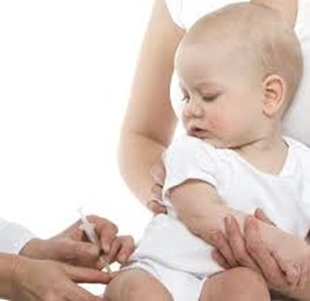
However, one must understand that adverse reactions are temporary health disorders that do not threaten health in general and pass without a trace. Unlike complications - which affect health and require long-term treatment. So, as far as complications are concerned, none of the varieties of the DTP vaccine, neither old nor new, have a high risk of these same complications (more on them below).
Where exactly should the healthcare worker give the injection?
Theoretically, the vaccine can be injected into any muscle tissue. But! The World Health Organization recommends give small children injections only in the thigh. The fact is that even in a 2-month-old baby, the muscles on the thigh are well developed, there are few blood vessels and subcutaneous fat (unlike the gluteal muscles).
If a nurse or doctor “aims” at your child’s bottom during vaccination, stop him by referring to an official document that has been in force in Russia since 2008 called “Sanitary and epidemiological rules. Ensuring the safety of immunization”. This document has been developed in accordance with federal law N 52-FZ "On the sanitary and epidemiological well-being of the population", and in paragraph 3.37 it has a prescription: "Intramuscular injections for children of the first years of life are carried out only in the upper outer surface of the middle part of the thigh."
But for children from 6-7 years old and adults, the vaccine is usually administered already in the shoulder area.
The DTP vaccine is the most reactogenic vaccine in the vaccination schedule. The reactogenicity of vaccination is largely due to the pertussis component, primarily pertussis toxin and lipopolysaccharide. The toxin causes hemorrhage, persistent vasoconstriction, degenerative changes in the liver, spleen, and kidneys. It is the action of these substances, sometimes present in trace amounts in the vaccine, that explains the appearance of early mild reactions to the introduction of DTP vaccinations. 95% of toxic reactions to the introduction of the DTP vaccine develop during the first day. The temperature rises to 39-40 ° C, there may be vomiting, lethargy, sleep disturbance. Symptoms disappear after 1-3 days.
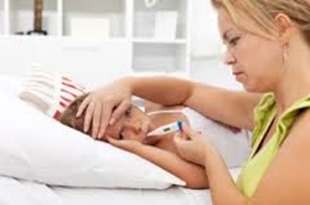
The cause of local and general allergic reactions are more often toxoids, reactions develop within a few hours after the introduction of the DTP vaccine. Hyperemia, pain, significant swelling appear at the injection site. The temperature often rises. Common reactions include Quincke's edema, urticarial, polymorphic and hemorrhagic rash. Accompanying skin diseases (eczema, dermatitis, neurodermatitis) are exacerbated. In rare cases, vaccination provokes bronchospasm, toxic-allergic conditions, hemolytic-uremic syndrome. Extremely rare (2 cases per 100,000 vaccine injections) anaphylactic shock occurs, which is more common immediately or within 20-30 minutes in older children after a second dose of the vaccine. For children early age the collapse occurring a week after vaccination is more characteristic.
The pertussis component of the DTP vaccine has a pronounced polyclonal effect on the formation of circulating antibodies, including reaginic antibodies of the IgE class. In this regard, the vaccination may contribute to allergic reactions to allergens unrelated to the DTP vaccine, for example, plant pollen, house dust, etc.
Of the lesions of the nervous system, convulsive reactions are the most typical (8-14 cases per 10,000 injections). Complications mainly appear in the first two days after vaccination in children. infancy. Febrile convulsions often occur against the background of hyperthermia, last from several seconds to several minutes, are usually single, sometimes with loss of consciousness. In more late dates(3-5 days and later) afebrile convulsions may develop, which are characterized by greater polymorphism and occur more often when the child falls asleep and wakes up.
In children of the first six months of life, a piercing cry syndrome may appear a few hours after vaccination. High-pitched screaming lasts from 1 to 10 hours and may be a harbinger of more severe neurological complications. It is assumed that the cry is associated with severe headache caused by CSF disorders.
Post-vaccination encephalitis develops in rare cases (1 case per 250,000–500,000 injections) on days 3–8 after vaccination, with convulsions, often repeated, hyperkinesis, paresis of the extremities. Unfortunately, it is not yet possible to completely prevent neurological complications from the administration of DTP vaccine, however, it should be noted that the risk of brain damage from whooping cough is 3,000 times higher than from the administration of the vaccine.
When is it worth worrying?
Typical side effects after DTP vaccination:
- The child is lame (leg hurts):
- After DTP vaccination, a swelling formed at the injection site;
- swollen leg;
- There is an inflammatory process;
- Caught a cold;
- After DPT, a cough or even whooping cough appeared;
- There was an abscess after vaccination;
- The kid got chicken pox.
- A child after DTP vaccination can be very capricious and drowsy.
Let's figure it out in order . The kid can really limp on the leg , because after the formation of swelling at the injection site, the leg may swell a little. There may even be a small inflammatory process.
Colds can indeed be caused by AKDS, because after its introduction, immunity can be weakened and the child is more likely to catch a cold. That's why if your child gets sick after being vaccinated with DTP, then this is quite normal.
Since vaccines cannot protect 100% of the disease (but only 95-98%), then the appearance of whooping cough after vaccination may indicate the absence of developed antibodies to the disease.
Nowadays, it is almost impossible to meet the formation of an abscess after DPT vaccination. Now it is done to the child in the thigh, mainly in its front part. Therefore, many mothers complain that after DTP the leg is swollen. But there was no abscess, which past generations encountered very often!
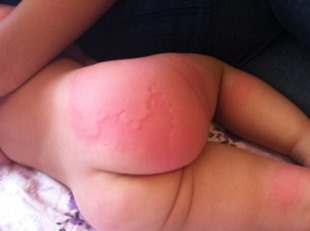
Abscess after DPT was very common when the vaccine was given in the gluteal muscle , where there is a lot of body fat in the baby. Their presence is simply necessary for the child in order to facilitate falling on the fifth point. In these fatty deposits, the substance cannot be fully absorbed and simply stagnates, leading to a possible abscess and not bringing any benefit.
Chickenpox after DPT cannot be caused by a vaccine , but if the baby gets sick after the injection, you should definitely and as soon as possible consult a doctor. Because the weakening of the immune system after DPT vaccination can give a severe course of chickenpox.
However, you should contact your pediatrician immediately if:
· 1 The temperature of the child's body crept up to 39 ° C;
2 The injection site is very swollen (more than 8-10 cm in circumference);
· 3 The baby cries heavily and continuously for more than 3 hours (there is a risk of dehydration).
Temperature after DTP vaccination. Usually, pediatricians around the world insist that an elevated temperature in an infant, not exceeding 38 ° C, should not be knocked down. However, this rule is "cancelled" in the conditions of vaccination - if after vaccination DTP temperature began to rise, immediately give the child an antipyretic.
Compaction, swelling and swelling at the injection site. If the health worker is experienced and “handy”, then there will be no big bumps and swelling after the injection. But it also happens that the drug does not enter the muscle tissue of the thigh, but into the subcutaneous fatty tissue. In this case, most often a strong seal and edema form. Show the injection site to the doctor - he will prescribe safe drugs that will increase blood circulation and reduce swelling.
However, do not confuse severe swelling and induration at the injection site with slight swelling. Naturally, when a preparation containing weakened infectious cells is injected into the muscle, a normal process of mild local inflammation occurs at the injection site. It will pass on its own after 1-2 weeks, without causing any harm to the health of the baby.
Skin redness and itching at the injection site. Slight redness (radius of about 2-4 cm at the injection site) is also normal, which can be explained by mild local inflammation caused by the vaccine. If, apart from redness at the injection site, you do not observe any other “troubles”, do nothing. The redness will gradually go away on its own in about 8-10 days.
Depending on how hard the baby tolerates the vaccine, there are several options for how to ease the symptoms:
- After vaccination, massage;
- Apply a compress;
- Use special ointments.
Such help definitely needs a doctor's consultation, because it all depends on the severity of the reaction and its type. But what is absolutely impossible to do is to apply an alcohol compress.
Results
- DTP vaccination is in most cases necessary, but each parent can refuse it.
- DTP is the most difficult to tolerate vaccine.
- Before all vaccinations, the child must be absolutely healthy and not have various allergies.
- Side effects and complications after DTP are local and general. The most complex complications are in the form of allergic reactions.
- The baby can be helped to relieve the symptoms that appeared after the vaccination by giving a massage, applying lotions or anointing with a special ointment. But such actions should be performed only on the recommendation of a doctor and only under his supervision.
- The first three DTP vaccinations provide immunity support for the first year. Further revaccination at the age of one and a half years ensures immunity to these diseases (whooping cough, diphtheria and tetanus) for 6-8 years.
March 20, 2012, 22:40
Girls yesterday, I wrote a post about the fact that I received DTP, they threw off information about DTP into my wild, read it, maybe it will come in handy for someone. DTP vaccination or inhibition of the development of children DTP is the most terrible of vaccines. An explosive mixture of diphtheria, whooping cough and tetanus cells. And this miracle vaccine is injected into the body of the baby as many as four times, starting from the age of three months. This is a very painful inoculation, and some children react to it with a long continuous cry. From DTP, the greatest number of complications and a greater percentage of the risk of allergic reactions in the child's body. On the conscience of this vaccine - numerous childhood deaths, lawsuits, many times it was banned in European countries, but not in Russia. Japan and Europe abandoned DTP By the early 1970s, 37 children had died from DTP vaccination in Japan. The Japanese stopped giving this vaccine to their children, then they transferred it from infant to 2 summer age. As a result, Japan jumped from 17th place in the world in terms of child mortality to the last place. In the 1980s, they began to vaccinate against whooping cough with a new cell-free vaccine, which led to a fourfold increase in sudden infant death syndrome in the next 10-12 years. A similar situation occurred in England, Germany, Holland. Whooping cough vaccinations killed and disabled dozens of children, after which the population began to refuse this vaccination. With the decrease in vaccination coverage, the number of visits to hospitals dropped sharply, and where vaccination was still not refused, an increase in the number of diseases was observed, that is, the vaccination did not save from the epidemic. What does it say? The fact that the DTP vaccine is deadly, and at best, simply useless, and remains on the vaccination calendar for some reason that is beneficial only to him, and not in the interests of people. This vaccine is poisonous DTP is not even called a vaccine, but a chemical-biological conglomerate that contains many chemical components that are harmful to human health, causing irreversible changes in the nervous system, affecting kidney and brain cells, causing cancer when they enter the stomach. All these components make the DTP vaccine the most dangerous vaccine that leads to autism and paralysis in children. Not many people know about this, and they do not realize the danger until they themselves face trouble. In addition to whole pertussis cells, this drug is made terribly dangerous by an organomercury pesticide called merthiolate or thiomersal, which is used as a preservative, and formaldehyde - all these poisons are present in a vaccine dose in an amount sufficient to poison the body little man! Merthiolate is not considered a drug in our country, it has not really been tested, and its use in the vaccine was allowed, based only on the results of testing on five guinea pigs, which were administered one dose each. During vaccinations, a child is given a dose five times more! Merthiolate is not excreted from the body, accumulates in the nervous tissue, and in combination with aluminum hydroxide, its toxicity increases tenfold! It is not difficult to guess that aluminum hydroxide is also contained in a dose of DTP. Merthiolate is a technical pesticide that Europe not only does not consider a drug, but even refused to produce this poison on its territory. And in our country, it is successfully used in the vaccine, and our Ministry of Health is not even going to conduct research on the dangers of this drug! Benefit or risk? According to data recognized by the World Health Organization, DPT vaccination causes persistent brain damage, various neurological seizures, up to death (5 deaths per million population). In the 70s, Swedish scientists proved a direct link with the introduction of the whole cell DTP vaccine and encephalopathies (convulsions). Scientists have decided that the benefits of vaccination are not worth the risk. Despite being banned in many countries, the United States continues to manufacture and sell DTP containing whole cell pertussis to third world countries, while Americans have abandoned this form of vaccine domestically. And the trouble is that no one can ever say in advance whether this vaccination will cause some kind of complication in this particular child, or everything will go well. Doctors reassure - this is a safe vaccination, complications are extremely rare, and most often all this is not discussed either before vaccination or after, only if an accident happens to the child. But even in this case, you will be told that vaccination has nothing to do with it, and it will be difficult to prove that the manifested diseases are related to the vaccination. Pay attention to what complications this vaccine can cause: huge purulent tumors on the skin that have to be opened, damage to the central nervous system, joints, gastrointestinal tract, heart, various allergic reactions, asthma, diabetes, awakening of hidden diseases - tuberculosis, hepatitis; anaphylactic shock, sudden death. Vaccination during an epidemic of other diseases can be fatal! So is it worth it, fearing an epidemic of whooping cough in advance, to agree to the introduction of such a dangerous dose of disease-causing cells and toxic substances into the child's body, thereby greatly increasing the risk that the child will then become disabled or, even worse, die? Or maybe it is worth finding alternative ways to preserve the health of the child and strengthen his immunity? Parents have the right to refuse vaccination or agree, but in any case, it is worth first getting full information from reliable sources, which, fortunately, are already available to everyone today. Now the question is how not to do it? After all, it is necessary!!! It's better to be safe!!! We now have children in the city who fell ill with whooping cough, they didn’t hear about this disease at all before, and now they began to manifest themselves, I’m a mother of 3 children, two daughters received DTP from me, I just don’t deny heavy vaccination. Do you think it’s worth it or not to do it? ??
DTP vaccination may not have the most unpleasant consequences. Given this, many parents are wary of her, despite the fact that she is designed to protect the body from viruses that can cause an epidemic.
So what should you be prepared for when going with your baby for vaccination, and what should be the correct preparation for this manipulation? Parents should be aware of the issue of the appropriateness of the vaccine, and its possible alternatives.
Each vaccination, its revaccination is aimed at contributing to the development of protective antibodies in the child's body. DTP can be considered one of the most difficult vaccinations, because the serum that is injected during the injection consists of three components.
In a three-component vaccine (whooping cough, tetanus, diphtheria), the component that can cause a strong reaction of the body is whooping cough. This can be explained by the fact that this particular component is made on the basis of a living bacterium that has undergone preliminary processing (partial).
The effect of whooping cough on the child's body is quite strong. For example, it can have a negative effect on the baby's brain and disrupt the functioning of his nervous system, due to their immaturity. As for the other components that make up the vaccine, they rarely contribute to the appearance of negative reactions of the body. After all, they are used in the form of a completely adsorbed substance that the body absorbs well.
There are times when a baby has contraindications for a vaccine consisting of three components. These include acute respiratory infections, chronic diseases, complications or a strong reaction to the previous vaccine, the baby has a disease of the nervous system.
In such cases, it is better not to vaccinate, or to use a two-component serum (ADS), but only after a complete examination of the crumbs by a doctor, carrying out the necessary tests.
What consequences are considered normal
After DTP vaccination, parents should be prepared for the fact that they may face certain consequences. Not all children are exposed to their manifestation, but in most cases those who have weak immunity. In other cases, the behavior and condition of the child remains unchanged. Among the consequences that can occur after vaccination, and are the norm, include:
- The appearance of redness in the place where the vaccination was made. If this spot is not hot, its diameter does not exceed 10 centimeters, then you should not panic. It is important to ensure that it does not increase in size and does not change its shape, because this can cause swelling, suppuration, and this can no longer be called a normal reaction of the body.
Due to the inflammatory process, the baby may experience pain that provokes capriciousness and tearfulness, sleep disturbances, and appetite. You can help the baby by using painkillers, which were discussed with the doctor the day before.
- Increase in body temperature. This happens due to the fact that the body fights for the production of antibodies. If the temperature exceeds 38 degrees, then it should be brought down, which ensures the normal state of the child, and the process of formation of protective antibodies in the body is carried out properly.
- Coughing of the baby, the appearance of a runny nose is another common consequence that can be encountered after DPT. Symptoms may be caused by one of the components of the serum - whooping cough.
If the crumbs have the above consequences, then it can be helped by reducing pain. It is allowed to make a light massage of the inflamed skin area, use a compress or a remedy (ointment, cream) that will reduce discomfort. Antipyretic drugs should also be prudently prepared, today most of them allow not only to reduce body temperature, but also to have a proper analgesic effect.
Serious consequences
The consequences of DTP vaccination can be dangerous for the health of the baby. Parents who plan to make it for their child should be aware of this. Serious consequences include:
- Spasm. Its appearance is due to the fact that the body temperature of the baby after the introduction of serum rises. In this case, neurological deviations occur in the body. Therefore, even increasing it to 38 degrees may well provoke this condition and lead to cerebral hypoxia.
- Allergy. Depending on the degree of its manifestation, rashes on the skin can be of a short-term nature, and disappear after a few days, after the administration of the serum, or they can be transferred to more serious complications. We are talking about atopic dermatitis, diathesis. All this gives children discomfort, and requires special treatment.
- Swelling of the internal organs, which is associated with the appearance of an allergic reaction. Anaphylactic shock was also noted among the serious consequences of this group.
- Cerebral encephalitis is a rather serious complication that can make absolutely healthy child disabled person (Downism). This can happen due to the fact that the component of the vaccine, whooping cough, has a negative effect on the meninges.
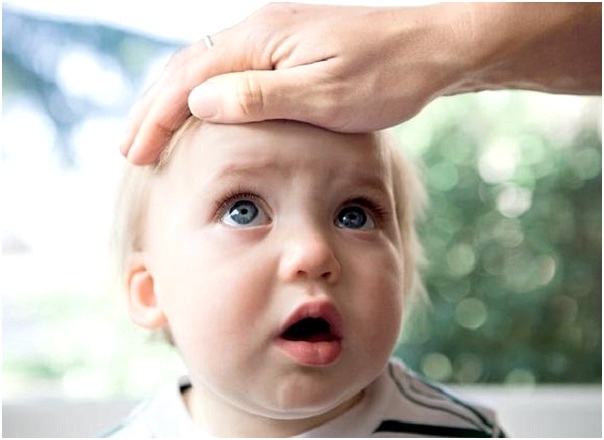
In the first three days after the introduction of a three-component vaccine into the baby's body, there is a possibility of the above-mentioned consequences. In this regard, every year more and more parents decide to abandon it, not understanding the risk they expose their baby to.
After all, everything that was mentioned above is just a partial manifestation of the reaction exerted on the body by the components of whooping cough, tetanus and diphtheria. And how the virus itself can affect the child's body and it's scary to think. Therefore, it is necessary to vaccinate, but it should be done correctly.
Proper preparation
Having made the decision to vaccinate a baby, parents must understand that the correct preparation and actions that must follow after the introduction of whey into the body play a huge role. And if after vaccination it is enough for the baby to give an anesthetic, antipyretic, then the preparation process will take more time and effort.
But at the same time, it will provide confidence that the child is healthy and Negative consequences even if they appear, they will be minimized. You can get vaccinated after:
- The child was examined by a doctor and given an appointment for a blood test, which was handed over.
- A preliminary consultation followed with specialists who fully explained to parents the need for this vaccination, what consequences it can cause and what to do if they occur. After this consultation, they should not have any questions left.
- There was a consultation with the doctor. In the event that the previous vaccine caused complications in the baby, this should not be hushed up. In this case, the doctor will select and advise an alternative to DTP.
A few days before DTP and after walking with the baby in places where there are a huge number of people, it is recommended to minimize it. This will prevent the entry of viruses into the body that can undermine the immune system and lead to the appearance of consequences after vaccination. Special attention should be given to the nutrition of the crumbs. In the next week after vaccination, it is not advisable to introduce new foods into his diet.
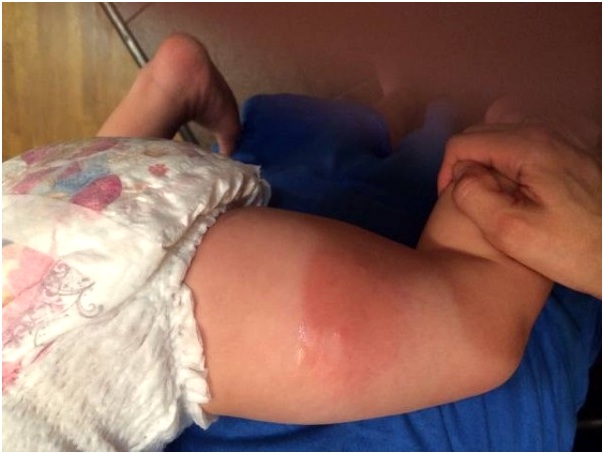
As for the condition of the crumbs, within 3 days after the introduction of serum into his body, it should return to normal - the body temperature will return to normal, swelling, redness will decrease, lameness will disappear, if it was. The condition of the baby will also improve.
He will become cheerful, smiling, calm, the regime will normalize, because nothing else bothers him. And this means that the components present in the serum are absorbed by the body.
The decision as to whether a child needs to be vaccinated or not is, of course, made by the parents. But they must understand that the vaccination schedule was invented for a reason. After all, the health of children depends on their timeliness.
If, on the other hand, free vaccinations that often appear in children's clinics and kindergartens do not inspire confidence, then the vaccine can be purchased with all the relevant documentation at the pharmacy. The availability of documentation should also be asked when it is planned to use a free vaccine.
According to parents, the consequences of DPT can be very diverse: from mild to extremely severe. What you need to know about cases when vaccination is postponed in order to avoid them?
Consequences of DTP
At small child the doctor may not notice the manifestations of diathesis. And many parents do not know that it is not worth vaccinating in this case. Because the DTP vaccination may not cause the best consequences.
Internal organs
The kidneys are especially affected. This is manifested by the fact that the child's body cannot remove unnecessary fluid, and it accumulates in different fabrics which contributes to the development of edema.
Fluid can be in the walls of almost all organs. Naturally, such a consequence is difficult to notice with the naked eye. In many cases, such swelling causes the development of chronic pyelonephritis.
In some cases, DTP can lead to the fact that the child will not only be unable to stand on his feet, but also walk. The complex composition of the vaccine and its high reactogenicity can lead to such consequences.
However, often after a few days, when the soreness passes at the injection site, the ability to walk and support the leg is restored.
But another, not so favorable, outcome is possible. A seal may form at the injection site after DTP vaccination. It quickly becomes critical and large in size.
In a short period of time, suppuration can occur, and this is already the competence of a surgeon. The area where pus accumulates is cleaned and then drained.
Naturally, for a baby, this is very painful, and may be accompanied by a deterioration in appetite and sleep. For children under one year old, the consequences after DTP vaccination can become very deplorable. After all Small child can't tell what and where it hurts.
The main thing is not to miss the moment. And as soon as there is a suspicion of the formation of suppuration, consult a doctor. It may be possible to cope with anti-inflammatory ointments that will help the seal to dissolve. This will help avoid surgery.
Post-vaccination encephalitis
In some children, after vaccination, such a reaction begins, which is accompanied by a strong hysterical cry, which can last quite a long time. Sometimes these symptoms go away as unnoticed as they begin.
Doctors attribute everything to soreness at the injection site and excessive sensitivity. But a child's crying that does not stop for a long time may indicate such a serious consequence as post-vaccination encephalitis.
Post-vaccination encephalitis can cause changes in the activity of brain structures, and can even lead to autism. In this case, the child does not express emotions well, ceases to recognize loved ones. Violated functions that are responsible for the ability to communicate. The speech center can also be affected, and this affects the ability to learn.
Skin reactions
Another grave consequence, to which DTP can lead, is associated with the occurrence of atopic dermatitis or neurodermatitis.
These skin diseases require not only drug treatment, but also finding out products that can provoke an allergic reaction. Care for inflamed skin should be carried out with the help of special cosmetics.
What does " " mean and how to do it?
Details on a separate page. do you know how to bathe a newborn girl? If not, then we have prepared an article for you.
The table on the page will show what complementary foods should be introduced at 6 months.
For parents, this is all additional financial costs, and for the child, the torment from itching and flaking, which manifests dermatitis.
The consequences after DTP can cause serious harm to the health of the child. However, you need to understand that in the case of whooping cough, diphtheria and tetanus, the likelihood of consequences increases many times over.
Yes, and severe reactions of the body are much more common.
Of course, vaccination is necessary, but it should be carried out at a time when the child is absolutely healthy.
Any reactions that cause even the slightest doubt in the parents should be immediately voiced to the pediatrician. If something goes wrong after vaccination, you should immediately contact the specialists.
Liked the article? Subscribe to site updates via RSS, or stay tuned
1. Post-vaccination reactions (PVR).
2. Post-vaccination complications (PVO).
Post-vaccination reactions are various changes in the condition of the child that develop after the introduction vaccines, and pass on their own within a short period of time. Changes in the body, qualified as post-vaccination reactions, are unstable, purely functional, do not pose a threat and do not lead to a permanent health disorder.
Post-vaccination complications are persistent changes in the human body that have occurred after the introduction of the vaccine. In this case, the violations are long-term, significantly go beyond the physiological norm and entail a variety of human health disorders. Let us consider in more detail the possible complications of vaccinations.
Post-vaccination complications can be toxic (unusually strong), allergic, with symptoms of disorders of the nervous system and rare forms. A post-vaccination complication should be distinguished from a complicated course of the post-vaccination period, when various pathologies are detected that occur simultaneously with vaccination, but are in no way associated with it.
Complications after vaccinations in children
Each vaccine can cause its own variant of the complication. But there are also complications common to all vaccines that can develop in children. These include the following states:- anaphylactic shock, which develops within a day after the introduction of the vaccine;
- allergic reactions involving the entire body - Quincke's edema, Steven-Johnson syndrome, Lyell's syndrome, etc .;
- serum sickness;
- meningitis;
- neuritis;
- polyneuritis - Guillain-Barré syndrome;
- convulsions that develop against a background of low body temperature - less than 38.5 o C, fixed for a year after the vaccination;
- violation of sensitivity;
- vaccine-associated poliomyelitis;
- thrombotic thrombocytopenic purpura;
- hypoplastic;
- collagenoses;
- decrease in the number of leukocytes in the blood;
- abscess or ulcer at the injection site;
- lymphadenitis - inflammation of the lymphatic ducts;
- osteitis - inflammation of the bones;
- keloid scar;
- the cry of the child for at least 3 hours in a row;
- sudden death.
Complications and side effects of vaccinations in children - video
The main causes of complications after vaccination
Complications after vaccination can be caused by one of the following reasons:- the introduction of the vaccine in the presence of contraindications;
- improper vaccination;
- poor quality of the vaccine preparation;
- individual properties and reactions of the human body.
That is why the basis for the prevention of complications of vaccinations is the careful identification of contraindications, compliance with the technique of using vaccines, quality control of drugs, compliance with the rules for their storage, transportation and transportation. Poor quality vaccines, however, are not necessarily inherent in them initially. The pharmaceutical plant could produce normal, high-quality drugs. But they were transported, and then stored incorrectly, as a result of which they acquired negative properties.
Complications after vaccination with DPT, ADS-m
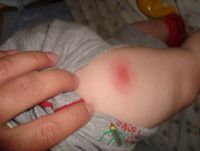 DTP vaccination is done to develop immunity to whooping cough, diphtheria and tetanus. At the same time, K is a component against whooping cough, AD is against diphtheria, AC is against tetanus. Similar vaccines are also available: Tetracoccus and Infanrix. The vaccine is given to children, three doses are administered, and the fourth - a year after the third. Then children are revaccinated only against diphtheria and tetanus at the age of 6-7, and at 14 years old - with the ADS-m vaccine.
DTP vaccination is done to develop immunity to whooping cough, diphtheria and tetanus. At the same time, K is a component against whooping cough, AD is against diphtheria, AC is against tetanus. Similar vaccines are also available: Tetracoccus and Infanrix. The vaccine is given to children, three doses are administered, and the fourth - a year after the third. Then children are revaccinated only against diphtheria and tetanus at the age of 6-7, and at 14 years old - with the ADS-m vaccine. The DTP vaccine provokes the formation of various complications in 1 child in 15,000 - 50,000 vaccinated. And the Infanrix vaccine has a significantly lower risk of complications - only 1 child per 100,000 - 2,500,000 vaccinated. The ADS-m vaccine almost never leads to complications, since it lacks the most reactogenic pertussis component.
All complications from the DTP vaccine are usually divided into local and systemic. The table shows all possible complications of DTP and ATP-m and the time of their development after vaccination:
| Type of complications DPT, ADS-m | Type of complications | Type of complications |
| Significant enlargement and induration at the injection site | Local | 24 – 48 hours |
| Swelling of the injection site greater than 8 cm in diameter | Local | 24 – 48 hours |
| Allergy | Local | 24 – 48 hours |
| Skin redness | Local | 24 – 48 hours |
| Scream continuous for 3 or more hours | Systemic | Up to two days |
| An increase in body temperature above 39.0 o C | Systemic | Up to 72 hours |
| Febrile convulsions (at a temperature of 38.0 o C and above) | Systemic | 24 – 72 hours |
| Seizures are afebrile (at normal temperature) | Systemic | 1 year after vaccination |
| Anaphylactic shock | Systemic | Up to 24 hours |
| Lymphadenopathy | Systemic | Up to 7 days |
| Headache | Systemic | Up to 48 hours |
| Irritability | Systemic | Up to 48 hours |
| indigestion | Systemic | Up to 72 hours |
| Severe allergic reactions (Quincke's edema, urticaria, etc.) | Systemic | Up to 72 hours |
| Decreased blood pressure, muscle tone | Systemic | Up to 72 hours |
| Loss of consciousness | Systemic | Up to 72 hours |
| Meningitis or encephalitis | Systemic | Up to 1 month |
| Sensory disturbance | Systemic | Up to 1 month |
| Polyradiculoneuritis | Systemic | Up to 1 month |
| Decreased platelet count | Systemic | Up to 1 month |
Local complications of DTP and ATP-m vaccinations usually go away on their own within a few days. To alleviate the condition of the child, you can lubricate the injection site with Troxevasin ointment. If the baby has developed complications after DTP vaccination, then the next time only anti-diphtheria and anti-tetanus components are administered, without whooping cough, since it is he who provokes most of the complications.
Complications after tetanus vaccination
 Tetanus vaccination can lead to the development of the following complications in the specified time frame:
Tetanus vaccination can lead to the development of the following complications in the specified time frame: - increase in body temperature within 3 days;
- redness at the injection site - up to 2 days;
- enlargement and soreness of the lymph nodes - up to a week;
- sleep disturbance - up to 2 days;
- – up to 2 days;
- digestive disorders and appetite - up to 3 days;
- allergic rash;
- long incessant cry - up to 3 days;
- convulsions against the background of elevated temperature - up to 3 days;
- meningitis or encephalitis - up to 1 month;
- auditory and optic nerve - up to 1 month.
Complications after vaccination against diphtheria
Vaccination against diphtheria alone is not too reactogenic, so it is relatively easy to tolerate. Complications can develop in the form of anaphylactic shock, at the injection site, pain at the injection site and the entire limb as a whole, and neurological disorders.Complications after Pentaxim vaccination
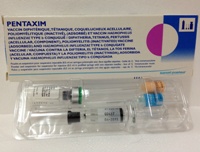 The Pentaxim vaccine is a combined one, it is administered against five diseases - diphtheria, whooping cough, tetanus, polio and Hib infection, which is caused by Haemophilus influenzae. According to observations of children who received all 4 doses of the Pentaxim vaccine, only 0.6% developed complications. These complications required qualified medical care but no deaths have been reported. Since Pentaxim contains a component against poliomyelitis, there is no risk of this disease, but it occurs when using an oral vaccine.
The Pentaxim vaccine is a combined one, it is administered against five diseases - diphtheria, whooping cough, tetanus, polio and Hib infection, which is caused by Haemophilus influenzae. According to observations of children who received all 4 doses of the Pentaxim vaccine, only 0.6% developed complications. These complications required qualified medical care but no deaths have been reported. Since Pentaxim contains a component against poliomyelitis, there is no risk of this disease, but it occurs when using an oral vaccine. Pentaxim, despite the five components, rarely causes reactions and complications, which are mainly manifested in the form of high fever, irritability, prolonged crying, hardening and bumps at the injection site. In rare cases, seizures, mild neurological symptoms, digestive disorders, severe pain at the injection site and the entire limb may develop. The most severe reaction, as a rule, develops on the second dose, and the first and third are easier.
Complications after hepatitis B vaccination
Vaccination against B can cause the following complications that develop within the specified time frame:- Increase in body temperature - up to 3 days.
- A pronounced reaction at the injection site (pain, swelling more than 5 cm, redness more than 8 cm, induration more than 2 cm) - up to 2 days.
- generalized BCG infection - after 2-18 months;
- osteomyelitis - after 2-18 months;
- osteitis - after 2-18 months;
- inflammation of the lymphatic ducts - after 2 - 6 months.
Complications after BCG vaccination
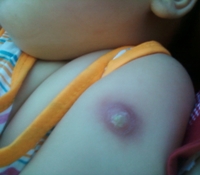 It must be understood that BCG is not put in order to make the body immune to tuberculosis, but to reduce the severity of the disease in case of infection. This is especially true for children under 1 year of age, in whom tuberculosis infection does not affect the lungs, but gives generalized blood poisoning or meningitis. However, BCG itself is a low-reactive vaccine that can provoke a rise in temperature within 2 days, an abscess under the skin at the injection site or more than 1 cm after 1.5-6 months, and a keloid scar after 6-12 months. In addition, the following are registered as complications of BCG:
It must be understood that BCG is not put in order to make the body immune to tuberculosis, but to reduce the severity of the disease in case of infection. This is especially true for children under 1 year of age, in whom tuberculosis infection does not affect the lungs, but gives generalized blood poisoning or meningitis. However, BCG itself is a low-reactive vaccine that can provoke a rise in temperature within 2 days, an abscess under the skin at the injection site or more than 1 cm after 1.5-6 months, and a keloid scar after 6-12 months. In addition, the following are registered as complications of BCG: Complications after flu vaccination
Vaccines against domestic and imported production are available in Russia, and all of them have approximately the same properties and are capable of causing similar complications. In general, the flu vaccine is extremely rarely accompanied by complications, the spectrum of which is very narrow. Most often, complications in the form of allergies appear, especially in people who have one on the drug Neomycin or chicken egg protein. Several cases of the formation of hemorrhagic vasculitis have been registered, however, the relationship of this pathology with the flu shot has not been established for certain.Complications after vaccination against chickenpox, measles, rubella, combined
MMR and Priorix vaccines
Priorix is a combination measles, mumps and rubella vaccine. Vaccinations against these infections cause almost the same reactions and complications. Thus, a rise in temperature can be observed only on the 4th - 15th day after vaccination, and a strong local reaction is observed in the first two days, and is expressed in the formation of severe edema of more than 5 cm, redness of more than 8 cm, and compaction of more than 2 cm. In addition, vaccinations against chickenpox, measles, rubella and combined MMR can cause the following complications at the appropriate time: - from 4 to 15 days.
Complications after rabies vaccination
The rabies vaccine very rarely provokes the development of complications, and they are mainly manifested by allergies, especially in people suffering from reactions to hen's egg protein. Neurological symptoms were also noted, such as neuralgia, dizziness attacks, neuropathy, which, however, after a short period of time pass on their own and without a trace.Complications after the Mantoux test
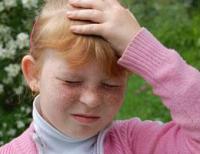 Mantoux is a biological test that is necessary to detect the infection of a child with a pathogen - Koch's wand. The Mantoux test is used in children instead of fluorography, which is done in adults. As complications, the Mantoux test may be accompanied by inflammation of the lymph nodes and ducts, as well as malaise, headache, weakness, or fever. The severity of reactions to the Mantoux test depends on individual features human body. For example, some children have severe arm pain or vomiting.
Mantoux is a biological test that is necessary to detect the infection of a child with a pathogen - Koch's wand. The Mantoux test is used in children instead of fluorography, which is done in adults. As complications, the Mantoux test may be accompanied by inflammation of the lymph nodes and ducts, as well as malaise, headache, weakness, or fever. The severity of reactions to the Mantoux test depends on individual features human body. For example, some children have severe arm pain or vomiting. Statistics of complications after vaccinations
To date, in Russia, official registration and control over the number of complications as a result of vaccination has been carried out only since 1998. Such work is carried out by national specialized scientific institutes and experts from the World Health Organization, but they are able to study the situation only in a limited number of localities, mainly in large cities. According to US statistics, every year 50 children develop severe neurological symptoms and disorders of the central nervous system as a result of vaccination complications. The table reflects various severe post-vaccination complications from various vaccinations according to the World Health Organization:| Vaccine | Complication | Development frequency complications |
| BCG | Inflammation of the lymphatic vessels | 1 in 1000 - 10,000 |
| Osteitis | 1 in 3000 - 100,000,000 | |
| Generalized BCG infection | 1 in 1000,000 | |
| Hepatitis B | Anaphylactic shock | 1 in 600,000 - 900,000 |
| Measles, mumps, rubella | Convulsions against the background of temperature | 1 in 3000 |
| Decrease in the number of platelets in the blood | 1 in 30,000 | |
| severe allergy | 1 in 100,000 | |
| Anaphylactic shock | 1 in 1000,000 | |
| encephalopathy | Less than 1 in 1,000,000 | |
| oral vaccine against poliomyelitis (drops in the mouth) | Vaccine Associated Poliomyelitis | 1 in 2000,000 |
| Tetanus | Shoulder nerve neuritis | 1 in 100,000 |
| Anaphylactic shock | 1 in 100,000 | |
| DPT | Long incessant scream | 1 in 1000 |
| convulsions | 1 in 1750 - 12500 | |
| Decreased pressure, muscle tone, loss of consciousness | 1 in 1000 - 33,000 | |
| Anaphylactic shock | 1 in 50,000 | |
| encephalopathy | 1 in 1000,000 |
The scatter in frequent complications is due to differences in different countries. A greater number of complications are due to neglect of the rules of vaccination, ignoring contraindications, improper storage and transportation of vaccines, the use of spoiled batches of drugs, and other similar factors.



